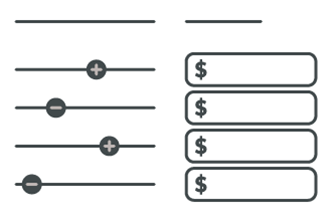Are you using reporting software or a business intelligence tool to analyze Amazon Data Seller and Vendor performance? Or are you hacking together a manually managed solution, presenting reporting in Excel or, goodness forbid, via screenshots from the Amazon console? If you know in your heart it’s the latter, then you’re likely missing out on the fundamental advantages of using an automated reporting tool for a more insightful, time-saving, and scalable process.
Sellers, vendors, and their managing agencies save time, money, and resources when using business intelligence software because it eliminates the need for team members to compile sales data manually and reveals critical insights automatically without having to search for the gold yourself. With a business intelligence tool in place, managers can spend more time reviewing the readily apparent adjustments that need to be made to an account, shift the focus to improving Amazon performance and away from fiddling with preparation of the data.
Not to mention, using technology vastly reduces or even eliminates the human error that inevitably occurs when manually managing the process such as deleted data, insecure data access, mistyped numbers, and more. You just can’t be confident in your reporting when you rely on an imperfect and non-repeatable process.
Success Depends on Choosing the Right Amazon Reporting Software
When Amazon sellers are using the ideal business intelligence software for their Amazon reporting needs, they don’t have to worry about the quality of the data, knowing it’s clean, accurate, and unspoiled by an errant fat finger.
Using the following criteria to identify the right Amazon reporting software for your business can help reduce the anxiety of making the wrong choice, and get you started on the path to freedom from being beholden to monthly manual processes and much-needed work-life balance.
1. Minimal Setup with an Easy-to-Use Interface
The Amazon reporting software must be user-friendly, bar none. No one likes opening a shiny new software only to find an interface that’s difficult to learn and complicated to use. And, if you need to spend hours setting up the software yourself, configuring the reports, and wasting time just to get it to work for your purposes, the likelihood of you using the software is next to none.
2. Satisfies Core Business Objectives and Presents the Proper KPIs
Every Amazon seller, vendor, and agency has the goal of managing a successful business. However, the road each travels to achieve their desired outcome can vary greatly. Depending on where you’re in the Amazon journey, what you measure will differ from another seller or agency. With an automated Amazon reporting tool, you can adapt reporting over time to present what’s important to the business clearly. This avoids having to update clunky manual reports on Amazon data that can’t evolve with you as you grow on the platform.
3. Enhances Optimizations and Issue Identification
The right Amazon reporting software clearly illustrates issues in an account, so you can address problems before they get out of hand.
For example, imagine your ACOS has increased by 50% in a week for a given account. Where will you begin to find out what caused the spike? A good Amazon business intelligence tool should be able to identify what caused the change and allow you to act on the issue directly in the platform (or at least indicate what you should do to triage the issue).
Optimizations should also be made easier and faster in the tool, streamlining your current process and cutting out unnecessary steps such as setting up pivot tables every time you want to analyze an account.
4. Ability to View and Analyze Multiple Accounts
Sellers, vendors, and agencies managing more than one Amazon account will appreciate the convenience of viewing all their data across marketplaces in one place and enjoy having it combined in the reporting stage. Thus, they can easily analyze the results of the report as a collective, finding insights across accounts and marketplaces that wouldn’t be available otherwise. Amazon reporting software that displays information in this manner is worth every penny because it saves sellers an immense amount of time, energy, and resources while also revealing patterns in the data not seen in manual reports.
5. Reasonably Priced and Aligned with Your Accounts
The right Amazon reporting software should not wipe out all the efficiency gains it provides. The hours you save using automation shouldn’t be acquired at a premium that is more costly than doing it manually (obviously).
Successful sellers, vendors, and agencies are choosing business intelligence software according to its pricing tiers. The pricing should be clearly defined and scale in line with how much revenue and profit you’re making on Amazon. Said another way, a small seller or agency shouldn’t be charged the same as the big guys making millions. For agencies, it’s important to make sure the subscription fees for a business intelligence tool align with client contracts where the fee is subsidized by the client via a tool fee and/or only increases if you are making more with your client via a percentage of spend or sales arrangement.
If you charge clients a flat fee, make sure the aggregate pricing for Amazon reporting software can be equitably shared across the clients and your fees cover the cost of the reporting tool.
6. Secure and Reliable Data
Cybercrimes and human error can cause catastrophes for your organization. This is the reason why careful choosing of the programs and apps that store our sensitive Amazon data is so important, along with the critical assessment of internal processes for handling the data.
As an example, say a seller is using business intelligence tool that doesn’t have Cloud-based marketing reports and rather stores Amazon performance reporting on the hard drive of a computer. One fateful day, their computer’s files become corrupted. Now the seller has no way of referencing past reports to see if their current marketing campaign is more, or less, powerful than the campaign they were using a year ago. This conundrum can cause more than just mayhem for the seller, including financial harm due to wasting funds on a weak marketing campaign based on bad information and hours spent trying to recover and rebuild reports and dashboards from scratch.
Pay special attention to whether the BI tools implement standard security controls and procedures involving the process, system, and data levels, so you have enhanced control over the type of data each tool can access. If the Amazon reporting software you’re considering doesn’t provide this, it’s best to keep looking.
Business Intelligence Software Gives Amazon Managers the Edge They Need
Not all business intelligence software is created equal. Some are lacking tools that can be the differentiator you need as a seller or agency to get ahead of your competition. This is the reason why it’s of vital importance to evaluate which reports, dates, and features you need to succeed while weighing the software’s price and security. It helps to choose software that offers a free trial period, so you aren’t committing to an Amazon reporting software that isn’t geared toward providing the data you’re most concerned about tracking and analyzing. After all, Amazon sellers, vendors, and agencies are all selling on the same platform. What sets them apart are the tools they use to gain an edge.
If you’re looking for an Amazon reporting software that checks all the boxes, MixShift has everything you need.
MixShift.io is designed by Amazon agency and brand experts just like you. They couldn’t find a reporting solution that fit their needs, so they built it themselves and are now offering it to everyone else. User-friendly, automated data flow, and pre-built reporting templates are just a few features the team has intentionally built into the platform. With MixShift, Amazon sellers, vendors, and agencies alike are saving tens of hours a month on their reporting process while gaining critical insights into their accounts and their Amazon performance that they didn’t have before. It doesn’t matter if you’re an agency, brand, or aggregator, MixShift empowers you to scale reporting, find hidden opportunities, and take action all from a single platform.
Discover how MixShift can change your entire reporting experience by requesting a demo today!







